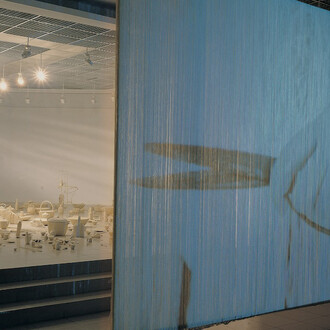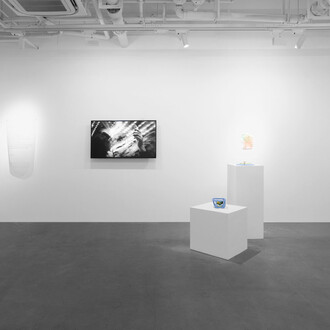The Power Station of Art, Shanghai, in collaboration with Collection de l’Art Brut, Lausanne, will present the exhibition “A Walk on the Wild Side: Artworks from the Collection de l’Art Brut and Elsewhere,” from July 12 to October 12, 2025. The exhibition brings together 259 exhibits by 52 artists, including pieces represented in the holdings of the Collection de l’Art Brut, as well as works by 4 self-taught Chinese artists. Also featuring substantial archival materials, documents, and footage tracing the history of the Collection de l’Art Brut in Lausanne, Switzerland since its founding in 1976, this exhibition marks the first comprehensive presentation in China on Art Brut and its development.
The notion of Art Brut, coined by French artist Jean Dubuffet (1901–1985), refers to artworks by self-taught artists operating outside the confines of the conventional art world. Most Art Brut creators often live on the margins of society, either as rebellious souls or isolated individuals who are impervious to normative and collective values. Their creative expressions exist for themselves, without any concern for public criticism or what other people might think, functioning as self-invented spiritual sanctuary. Totally original in the chosen means and materials, works of Art Brut are utterly singular in their processes, invented anew each step of the way.
In 1971, Dubuffet donated his collection of more than 5,000 works to the City of Lausanne, Switzerland, forming the core of the Collection de l’Art Brut. Today, the Collection de l’Art Brut remains the only institution to own Dubuffet’s Art Brut collection. Through ongoing acquisitions, donations, and the discovery of new creators, the Collection de l’Art Brut has steadily evolved into an internationally renowned public institution dedicated to the preservation and research of Art Brut.
Though marginalized, socially isolated, and often constrained, Art Brut artists are at the core of the exhibition. Their photographic portraits, featured in the first room, echo a selection of documentaries that are devoted to them at the end of the exhibition. They offer a close-up encounter with creation and with these artists who, for the most part, are unknown to the general public. Their works, grouped by themes, are divided into six sections: “Inner Worlds”, “Human Figures”, “Creatures”, “The World Around”, “The World as an Inventory”, and “Abstract Worlds”, investigating their relationships with the world around them. These cross-cutting, porous, topics evoke the place of human beings in the world and society, the importance of language and communication, while offering a constant back-and-forth between personal universes, dream worlds and everyday reality.
The exhibition features creators who inspired Dubuffet, including Adolf Wölfli and Aloïse Corbaz, as well as those identified by the Collection de l’Art Brut over the past five decades, such as Kōmei Bekki, Davood Koochaki, and Judith Scott. Among them, Chinese artist Guo Fengyi features prominently. The Collection de l’Art Brut hosted a major retrospective of her works in 2011–2012. The Power Station of Art also holds several pieces by the same artist in its collection. Her creation serves as an artistic bridge between the two institutions—one focused on contemporary art, the other on Art Brut.
In the centre of the exhibition space is an exhibit paying tribute to Jean Dubuffet—the inventor of Art Brut. That space includes archival documents from the holdings of the Collection de l’Art Brut as well as a timeline charting the emergence and development of a concept that has reframed how we think about and define art.
In addition, two sets of slideshows allow the visitors to discover Art Brut environments; these constructions or installations, originally located outdoors, in gardens or natural spaces. They are situated in unusual locations and feature extraordinary structures, layouts, and designs—often the result of years of effort by their creators. Exquisitely crafted, they are particularly vulnerable to the passage of time, frequently falling into disrepair or being abandoned after the death of their creators. Some have even disappeared, underlining the fragility of production in the field of Art Brut.
Through their singularity, Art Brut artists give us a new way of looking at the world, and encourage us to pay closer attention to what surrounds us. As Jean Dubuffet reminded us, “true art always appear where you do not expect it, where nobody thinks of it or utter its name. Art hates to be recognized and greeted by its name. It runs away immediately.”
















